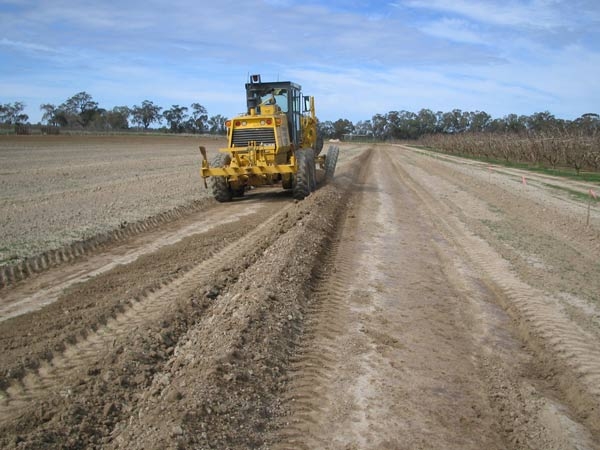STEP 4. Hill up the surface soil
Most feeder roots grow in the surface soil, so when the surface soil is shallow, these roots are severely restricted.
Yet few roots grow in the compacted surface soil in the traffic-lines between rows of trees. If the land is also flat, the soil can easily be waterlogged when we get much rain.
To solve these problems, use a road grader to take the wasted surface soil from the traffic-lines, and hill-up the surface soil before you plant the trees.
This increases the volume of soil for the feeder roots to explore, and the sloping beds also allow excess rain water to run off. Surface drainage is as important as irrigation.
STEP 5. Sow ryegrass onto the beds or let voluntary weeds develop
This step must be carried out in early autumn to ensure that the ryegrass or weeds get established before the winter sets in. Use irrigation water to germinate and establish ryegrass or weeds.
STEP 6. Spray out ryegrass or weeds before you plant trees
Ryegrass or weeds are needed to keep the soil covered to avoid impact from heavy rain, and avoid impermeable crusts from forming and to stabilise the soil.
Once this has taken place, you must kill the ryegrass or weeds in spring, because ryegrass or weeds compete with trees for water and nutrients during the growing season.
Management
Many orchard soils are fragile and need careful management to sustain the production of fruit for a long time.
The six steps will help you to plan any new planting of fruit trees.
See this article in Tree Fruit April 2015




















